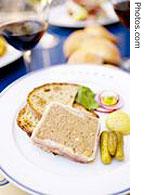2007年VOA标准英语-Restaurants Working Towards Being Green(在线收听)
New York
04 August 2007
Many U.S. restaurants are now taking steps to be more ecologically conscious in their business practices. From recycling to using nontoxic cleaning products to installing energy-efficient forms of lighting, dining establishments all over the United States are becoming more environmentally responsible. From VOA's New York Bureau, Mona Ghuneim has the story.
 |
Walk through the dining room, kitchen or even bathroom of any restaurant and listen to the amount of energy being used…
Restaurant owners, chefs and food industry workers do not expect their guests to know how much electricity their establishment uses or where they dispose of huge amounts of waste, but many in the industry are making sure their businesses follow guidelines that are environmentally sound.
The B.R. Guest Restaurant Group, which owns and operates many restaurants in New York, Chicago and Las Vegas, recently received green certification from the GRA.
Laurel Cudden is the director of health and food safety for B.R. Guest. She says all of the group's restaurants are taking steps to be environmentally responsible.
"We started a comprehensive recycling program and we also did some waste reduction steps which included eliminating all Styrofoam and also shifting from employee-use disposable products to things that are reusable, such as plates and utensils and glassware," she said.
Cudden says the GRA requires each of its member restaurants, whether small businesses or large chains, to take at least four environmental steps each year. She says B.R. Guest recently installed low-flow aerators to conserve water and is now researching more energy efficient lighting for its properties.
GRA founder Michael Oshman says restaurants can be both successful and environmentally responsible. It takes some getting used to, he says, but eventually it becomes a way of life.
"Our approach is very much to empower the restaurateurs to inspire their staff and their customers and really shift their culture to one that is running a successful restaurant business that is good for the air and good for the water and good for the employee and good for the customers," he said.
Oshman says more than 300 restaurants nationally have been certified by the GRA, including the Belgian restaurant chain Le Pain Quotidien.
Catherine Lederer is the U.S. director of environmental issues for the chain. With 22 U.S. locations, and growing, she says it is not always easy being green.
"You literally have to walk through the facility and check the garbage pails and pull things out if they're not in the right bin," she expalined.
But Lederer and other restaurant industry workers say going down the green path is the only way to go.
Her colleague and vice president of U.S. operations for the company, Pat Jenkins, says the solutions are not always convenient or cheaper.
"It costs more to use a PLA [polylactic acid] based plastic cup that's compostible [biodegradable]. It costs more to use a limestone and potato-based utensil for your take-out products that's compostible, but not all costs are economic," he explained.
Jenkins says these products may be more expensive now, but in the long run, the company will save money on things like employee health costs. He says using non-chemical cleaning products, for example, can result in less health problems, and at the same time help the environment.
In Washington, D.C., the restaurant Hook adheres to environmentally responsible codes of its own. It is not a member of the GRA, but its chef, Barton Seaver, says he incorporates ecologically friendly practices into his restaurant because it makes sense for the environment, and for business. He serves local products and only fresh fish that is not endangered.
Seaver says he knows exactly where his fish comes from. He acknowledges it can be an added burden constantly researching seafood, speaking personally with vendors and distributors, and working closely with environmental organizations, but he says he would not have it any other way.
"It's worth it though," he said. "It's absolutely worth it for us to be doing this out of our own sense of self-preservation. Hey, I run a seafood restaurant. I would like there to be seafood around in 10 years for me to sell."
Seaver says he wants to make his customers and the environment happy. And by serving responsibly sourced fish like wahoo with a roasted onion puree or amberjack with grapefruit and arugula, he probably will.